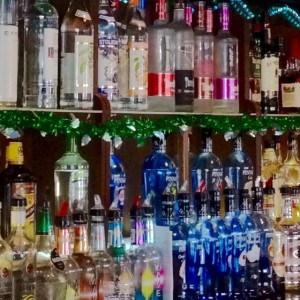 Fairfield cops charged a woman after she allegedly hit a patrol car near 3 a.m. over the weekend. Additionally, police claim she pushed the officer’s car “a decent distance,” per the news. Furthermore, they claim her car “had substantial damage to the front of it.” Fortunately, neither the woman nor the cop were hurt. Nevertheless, the woman was allegedly confused, did not know where she had come from, and did not know where she was going, per the news. In addition to Standardized Field Sobriety Tests, the police claim her Blood Alcohol Content (B.A.C.) exceeded the legal limit. Consequently, the cops charged the woman with driving while intoxicated and careless driving.
Fairfield cops charged a woman after she allegedly hit a patrol car near 3 a.m. over the weekend. Additionally, police claim she pushed the officer’s car “a decent distance,” per the news. Furthermore, they claim her car “had substantial damage to the front of it.” Fortunately, neither the woman nor the cop were hurt. Nevertheless, the woman was allegedly confused, did not know where she had come from, and did not know where she was going, per the news. In addition to Standardized Field Sobriety Tests, the police claim her Blood Alcohol Content (B.A.C.) exceeded the legal limit. Consequently, the cops charged the woman with driving while intoxicated and careless driving.
Driving While Intoxicated, N.J.S.A. 39:4-50
Alcotest Theory
A few years ago, the New Jersey Attorney General authorized the Alcotest 7110 MKIIIC (Alcotest) as the State’s “breathalyzer.” Subsequently, the Supreme Court of New Jersey determined the device to be scientifically reliable in State v. Chun, 194 N.J. 54 (2008). Indeed, Alcotest results play a key role in drunk driving/DUI prosecutions.
“Bracketing”
Almost certainly less exciting than your fantasy sports bracket, each Alcotest device relies on circumstantial evidence to suggest it operated properly on each individual. Each Alcotest device holds a mixture of water and alcohol of known strength. The Alcotest uses this mixture to simulate a human breath sample with a 0.10% B.A.C. Executing a control test before and after it evaluates the actual samples from the human allows the operator to infer it operated properly on the human subject.
Infrared and Electro-Chemical Control Tests
Additionally, the Alcotest uses two technologies concurrently to evaluate simulated and actual breath samples. They are infrared (IR) and electro-chemical (EC) energy technologies. First, during the IR test, an infrared beam passes through the molecules, and alcohol molecules diminish the beam’s energy level. Consequently, a detector measures the difference between the energy before and after emission. Similarly, the Alcotest subjects the sample to EC measurement. In theory, if the results from the two unrelated tests are within an acceptable range of one another, then the results are likely accurate.
Statewide Database
Finally, the Alcotest transmits the results, apparently by modem, to the State Police who maintain a database of every test conducted by every Alcotest in New Jersey.
But do you know how to evaluate the Alcohol Influence Report? Additionally, do you know if the IR and EC results are valid? Furthermore, do you know how to analyze the Alcotest Foundational Documents? Finally, why would you take the State’s word for it when you are facing Drunk Driving penalties? New Jersey DWI Lawyer Michael Smolensky, Esquire, knows how to protect his clients. A charge of Driving While Intoxicated calls for an aggressive defense. Mr. Smolensky can provide consultations for all cases involving DWI/DUI. Call Now—(856) 812-0321.